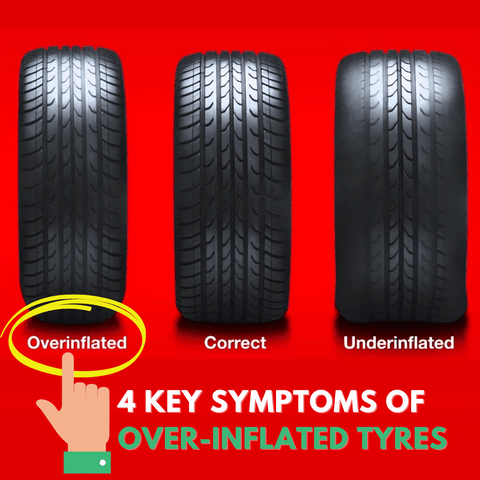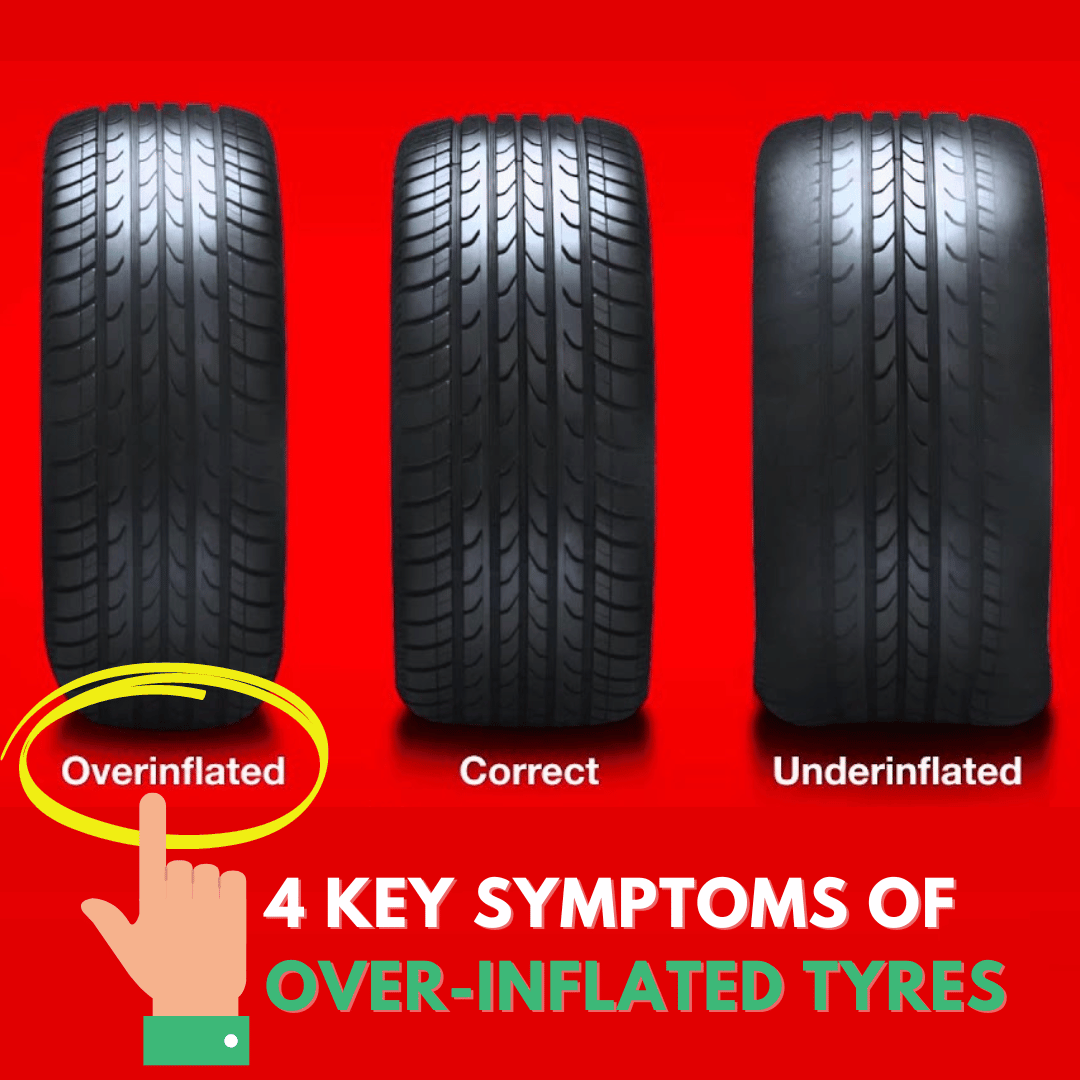
Updated: 26.3.25
Let’s explore the signs, dangers, and how to prevent over-inflation for a safer ride in 2025.
What Causes Over-Inflated Tyres?
Over-inflation happens when tyres have too much air pressure, causing the centre to wear out faster.
This can lead to discomfort, poor handling, and safety hazards. Related: Soft EVA Tyres.
4 Key Symptoms of Over-Inflated Tyres
1. Reduced Traction
Over-inflated tyres get stiff, reducing the contact area with the road—like skating on thin ice.
This makes turns and stops harder, risking your safety. Related: Go-Kart Tyre Durability.
2. Excessive Centre Tread Wear
Too much air pressure rounds out the tyre’s centre, causing it to wear faster than the edges.
This uneven wear shortens tyre life and can lead to blowouts or poor handling.
3. Uncomfortable Rides
Over-inflated tyres become hard, making every bump feel jarring—like riding on a wooden board.
This reduces comfort for you and your passengers, even on smooth roads.
4. Car System Strain
Over-inflation stresses more than just tyres—it impacts braking, suspension, and other systems.
This added strain can cause failures, turning a tyre issue into a bigger car problem.
Risks of Over-Inflation
Tyre Damage
Over-inflated tyres are rigid, making them prone to punctures or blowouts from potholes or debris.
Fuel Efficiency
While they reduce rolling resistance, the loss of traction can actually lower fuel efficiency.
Preventing Tyre Over-Inflation
- Check Monthly: Use a gauge to monitor tyre pressure—compare to the manual’s recommended PSI.
- Quality Gauge: Invest in a reliable air pressure gauge for accurate readings.
- Adjust for Conditions: Check more often in cold weather (pressure drops 1 PSI per 10°F drop).
Keep your tyres at the right pressure for a smooth, safe ride!
Conclusion
Over-inflated tyres can lead to reduced traction, uneven wear, bumpy rides, and system strain.
Regular pressure checks and a good gauge can prevent these issues, ensuring a safer, smoother drive in 2025.
FAQs
How do I check for over-inflation?
Use a pressure gauge—compare the reading to your vehicle’s recommended PSI in the manual or door jamb.
Does tyre pressure vary by vehicle?
Yes, it depends on the vehicle’s weight and type—check your manual for specifics.
What are the risks of under-inflation?
Under-inflation causes overheating, blowouts, poor handling, and lower fuel efficiency.
How often should I check tyre pressure?
Monthly, before long trips, or when refueling—more often in cold weather.
Get in Touch 🚀
Loved “4 Key Symptoms of Over-Inflated Tyres?” Need more vehicle tips or ride-on toys?
Visit RiiRoo.com, email us at hello@riiroo.com, or chat live!






Share:
Why Is My Go-Kart Hopping Through Corners?
Do Slick Tyres Have More Grip? Exploring Performance and Safety